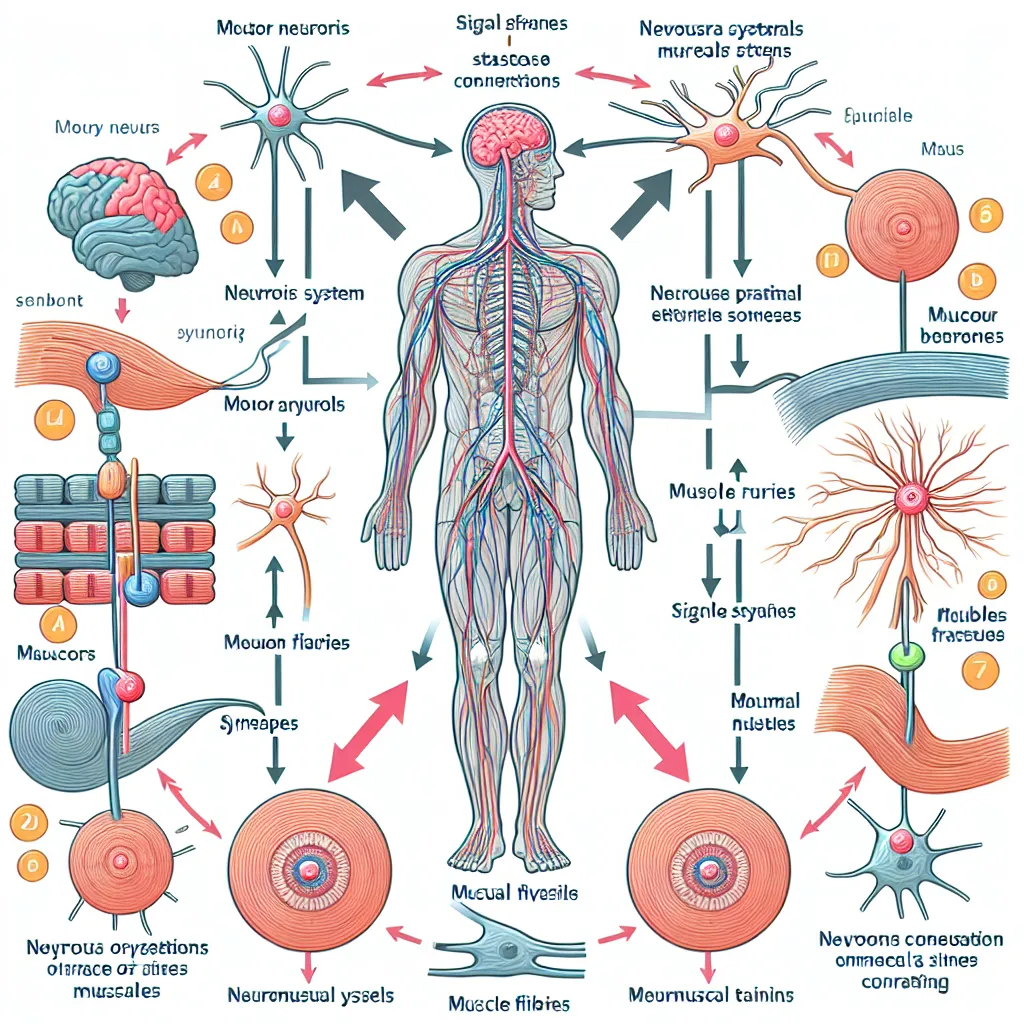Neuromuscular training is an essential concept in sports science and physical therapy. As an IELTS candidate, understanding this term and its related vocabulary can significantly enhance your performance in the exam, especially in the Reading and Speaking sections. Let’s dive deep into this topic and explore how you can effectively learn, remember, and use this terminology in your IELTS preparation.
Understanding ‘Neuromuscular Training’
Definition and Pronunciation
Neuromuscular training (noun) /ˌnjʊərəʊˈmʌskjʊlə treɪnɪŋ/: A type of physical training that focuses on improving the communication between the nervous system and the muscles to enhance movement efficiency, balance, and overall performance.

Context and Usage
Neuromuscular training is commonly used in various contexts:
-
Sports Performance: “The coach implemented a neuromuscular training program to improve the athletes’ agility and reduce injury risk.”
Analysis: This sentence demonstrates the application of neuromuscular training in sports, highlighting its benefits for performance enhancement and injury prevention.
-
Rehabilitation: “After her knee surgery, Sarah underwent intensive neuromuscular training to regain strength and stability in her leg.”
Analysis: Here, we see the use of neuromuscular training in a medical context, specifically for rehabilitation purposes.
-
Fitness Programs: “Modern fitness regimens often incorporate neuromuscular training exercises to improve overall body control and functional movement.”
Analysis: This example shows how neuromuscular training has become a part of general fitness practices, emphasizing its relevance beyond professional sports.
-
Research Studies: “The study concluded that neuromuscular training significantly reduced the incidence of ACL injuries among female basketball players.”
Analysis: This sentence illustrates how the term is used in academic or research contexts, providing evidence for its effectiveness.
-
Occupational Therapy: “Occupational therapists use neuromuscular training techniques to help patients with neurological disorders improve their daily living skills.”
Analysis: This example broadens the application of neuromuscular training to occupational therapy, showing its versatility in different health-related fields.
Frequency in IELTS
While ‘neuromuscular training’ is not an extremely common term in IELTS, it may appear in Reading passages related to sports science, health, or physical therapy. It’s more likely to be useful in Speaking Part 3 or Writing Task 2 when discussing topics related to health, fitness, or sports technology.
Vocabulary Analysis
Word Structure
- Neuro- (prefix): Relating to nerves or the nervous system
- Muscular (adjective): Of or relating to muscles
- Training (noun): The action of teaching a person or animal a particular skill or behavior
Understanding these components can help you deduce the meaning of similar terms like ‘neuromuscular junction’ or ‘neuromuscular disorder’.
Synonyms and Antonyms
Synonyms:
- Proprioceptive training /ˌprəʊprɪəˈseptɪv treɪnɪŋ/ (noun): Training that focuses on improving awareness of body position and movement.
- Sensorimotor training /ˌsensərɪˈməʊtə treɪnɪŋ/ (noun): Training that combines sensory input with motor control exercises.
- Neuromuscular reeducation /ˌnjʊərəʊˈmʌskjʊlə riːˌedjʊˈkeɪʃən/ (noun): The process of retraining the neuromuscular system to perform specific functions.
Antonyms:
- Static training /ˈstætɪk treɪnɪŋ/ (noun): Training that involves holding a position without movement.
- Isolated muscle training /ˈaɪsəleɪtɪd ˈmʌsl treɪnɪŋ/ (noun): Training that focuses on individual muscles rather than the neuromuscular system as a whole.
Memorization Techniques
Mind Mapping
Create a mind map with ‘Neuromuscular Training’ at the center, branching out to related concepts such as:
- Benefits (injury prevention, performance enhancement)
- Applications (sports, rehabilitation, fitness)
- Key exercises (plyometrics, balance training)
- Related terms (proprioception, motor control)
Storytelling
Imagine a young athlete named Alex who struggled with frequent injuries. After starting a neuromuscular training program, Alex’s coach noticed significant improvements in balance, coordination, and overall performance. This personal story can help you remember the benefits and applications of neuromuscular training.
Practice Exercises
-
Writing Task:
Write a paragraph explaining how neuromuscular training could be beneficial for elderly individuals. Use at least three related terms from the vocabulary list provided. -
Speaking Practice:
Imagine you’re explaining neuromuscular training to a friend who is not familiar with the concept. Record yourself speaking for 1-2 minutes, focusing on clear explanations and proper pronunciation. -
Reading Comprehension:
Find a scientific abstract about neuromuscular training and identify key vocabulary. Try to explain the main findings using your own words while incorporating the specialized terminology.
Conclusion
Mastering the concept of neuromuscular training and its related vocabulary can significantly enhance your performance in the IELTS exam, particularly in tasks involving health, sports, or physical therapy topics. Remember to practice using these terms in context, and don’t hesitate to incorporate them into your Speaking and Writing responses when appropriate.
We encourage you to share your experiences with learning this vocabulary in the comments section below. How did you find the mind mapping or storytelling techniques? Do you have any additional methods for remembering specialized terms like these? Your insights could be valuable for other IELTS candidates preparing for the exam!